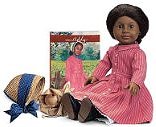 American Girl Addy Doll |
Harriet Tubman
Runaway Slave
|
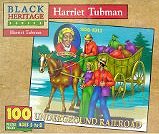 Harriet Tubman Toys |
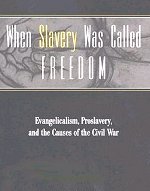 When Slavery was Called Freedom: Evangelicalism, Proslavery, and the Causes of the Civil War Dissects the evangelical defense of slavery at the heart of the nineteenth century's sectional crisis. John Daly's writing uncovers the cultural and ideological bonds linking the combatants in the Civil War era and reinterprets the intellectual foundations of secession |
Born: c. 1820, Dorchester County, Maryland Harriet Tubman was a runaway slave from Maryland who became known as the "Moses of her people." Over the course of 10 years, and at great personal risk, she led hundreds of slaves to freedom along Harriet Tubman's name at birth was Araminta Ross. She was one of 11 children of Harriet and Benjamin Ross born into slavery in Dorchester County, Maryland. As a child, Ross was "hired out" by her master as a nursemaid for a small baby, much like the nursemaid in the picture. Ross had to stay awake all night so that the baby wouldn't cry and wake the mother. If Ross fell asleep, the baby's mother whipped her. From a very young age, Ross was determined to gain her freedom. |
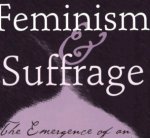 Feminism and Suffrage: The Emergence of an Independent Women's Movement in America, 1848-1869 In the two decades since Feminism and Suffrage was first published, the increased presence of women in politics and the gender gap in voting patterns have focused renewed attention on an issue generally perceived as nineteenth-century |
|
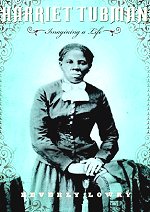 Harriet Tubman: Imagining a Life: A Biography Travel with Tubman along the treacherous route of the Underground Railroad. Hear of her friendships with Frederick Douglass, John Brown, and other abolitionists. Young Reader Titles 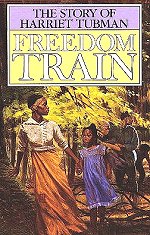 Freedom Train: The Story of Harriet Tubman Harriet escaped North, by the secret route called the Underground Railroad. Harriet didn't forget her people. She risked her life to lead them on the same secret, dangerous journey |
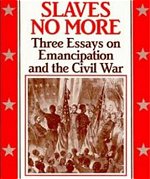 Slaves No More: Three Essays on Emancipation and the Civil War The first essay traces the destruction of slavery by discussing the shift from a war for the Union to a war against slavery The second essay examines the evolution of freedom in occupied areas of the lower and upper South. The third essay demonstrates how the enlistment and military service of nearly 200,000 slaves hastened the transformation of the war into a struggle for universal liberty |
Fugitive African Americans Fording the Rappahannock River. Rappahannock, Virginia, August 1862
|
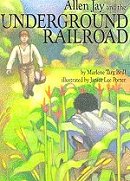 Allen Jay and the Underground Railroad Allen Jay and the Underground Railroad is the retelling of a man's recollections of his first experience helping an escaped slave. The book brings the underground railroad down to the level primary students can comprehend. This book makes for wonderful discussions regarding overcoming one's fears, going against the norm and doing what you believe to be morally correct. |
Harriet Tubman with slaves she helped during Civil War
|
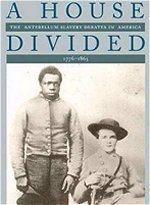 A House Divided: The Antebellum Slavery Debates in America, 1776-1865 An excellent overview of the antebellum slavery debate and its key issues and participants. The most important abolitionist and proslavery documents written in the United States between the American Revolution and the Civil War |
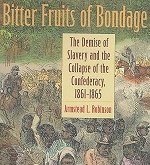 Bitter Fruits Of Bondage: The Demise Of Slavery And The Collapse Of The Confederacy, 1861-1865 The process of social change initiated during the birth of Confederate nationalism undermined the social and cultural foundations of the southern way of life built on slavery, igniting class conflict that ultimately sapped white southerners of the will to go on. |
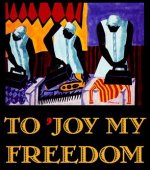 To 'Joy My Freedom: Southern Black Women's Lives and Labors after the Civil War Thousands of former slaves flocked to southern cities in search of work, they found the demands placed on them as wage-earners disturbingly similar to those they had faced as slaves: seven-day workweeks, endless labor, and poor treatment |
 I've Got a Home in Glory Land: A Lost Tale of the Underground Railroad The Blackburn case was the first serious legal dispute between Canada and the United States regarding the Underground Railroad. The impassioned defense of the Blackburns by Canada's lieutenant governor set precedents for all future fugitive-slave cases |
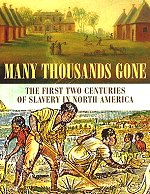 Many Thousands Gone: The First Two Centuries of Slavery in North America The evolution of black society from the first arrivals in the early seventeenth century through the Revolution |
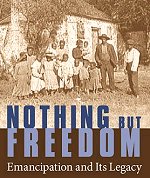 Nothing but Freedom: Emancipation and Its Legacy Insights into the relatively neglected debates over fencing laws and hunting and fishing rights in the postemancipation South, and into the solidarity of the low-country black community |
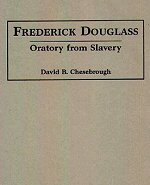 Oratory from Slavery Great American Orators, No. 26 Frederick Douglass, once a slave, was one of the great 19th century American orators and the most important African American voice of his era. This book traces the development of his rhetorical skills, discusses the effect of his oratory on his contemporaries, and analyzes the specific oratorical techniques he employed |
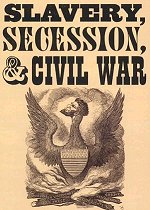 Slavery, Secession, and Civil War: Views from the UK and Europe, 1856-1865 |
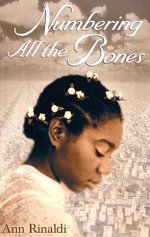 Numbering The Bones The Civil War is at an end, but for thirteen-year-old Eulinda, it is no time to rejoice. Her younger brother Zeke was sold away, her older brother Neddy joined the Northern war effort,. With the help of Clara Barton, the eventual founder of the Red Cross, Eulinda must find a way to let go of the skeletons from her past. |
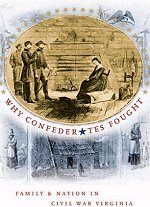 Why Confederates Fought: Family and Nation in Civil War Virginia The Southern view of slavery as essential to the Southern economy is reiterated. Slavery was the great Southern irony, viewed as a foundation of white liberty. From that perspective, the Confederate soldier's choice was simply victory or death |
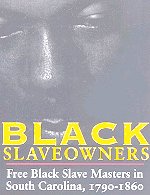 Black Slaveowners: Free Black Slave Masters in South Carolina, 1790-1860 An analysis of all aspects and particularly of the commercialism of black slaveowning debunks the myth that black slaveholding was a benevolent institution based on kinship, and explains the transition of black masters from slavery to paid labor. |
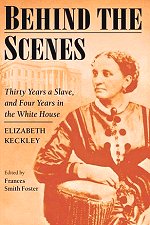 Behind the Scenes: Thirty Years a Slave, and Four Years in the White House This is a memior written by a woman who started life as a slave, then managed to buy her freedom, and later set up a successful living as a seamstress, eventually going to work for Mary Todd Lincoln in the White House |
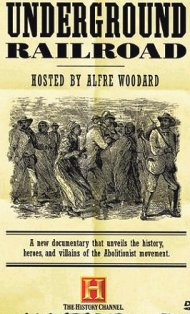 |
History Channel DVD Movie Title The Underground Railroad, "the first civil rights movement," was no mere act of civil disobedience. The secret network of guides, pilots, and safe-house keepers (the Railroad's "conductors") was built by runaway slaves who, over the decades, communicated their experiences through songs and secret gestures, and were supported by abolitionists (many of them former slaves) who risked their own freedom to help free the enslaved. The "passengers" risked their lives. A wealth of photos, documents, and commentary by modern historians provides the broad lines of history, but it comes alive in the individual stories of conductors and passengers, among them abolitionist and historian William Still, called the "Father of the Underground Railroad," and Henry "Box" Brown, who mailed himself to freedom in a cargo crate. They (and many others) take their place beside Harriet Tubman ("the Moses of her people") and Frederick Douglass as courageous heroes in America's first integrated social movement. The DVD also features the Biography episode on Frederick Douglass, the complete text of the Emancipation Proclamation, a biographical essay on Harriet Tubman, and other historical background pieces. |
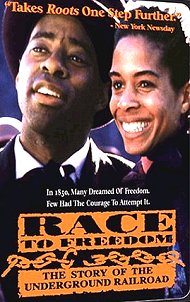 Race to Freedom The Underground Railroad The movie took me inside the Underground Railroad and showed how people of all walks of life were involved in assisting African-Americans in helping them cross into Canada. |
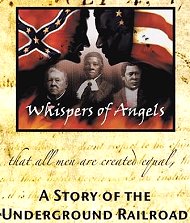 A Story Of the Underdround Railroad Defiant, brave and free, the great abolitionists Thomas Garrett, William Still and Harriet Tubman, along with hundreds of lesser known and nameless opponents of slavery, formed a Corridor of Courage stretching from Maryland's eastern shore through the length of Delaware to Philadelphia and beyond -- making the Underground Railroad a real route to freedom for enslaved Americans before the Civil War. |
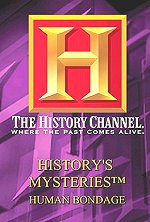 History's Mysteries - Human Bondage The story of Africans forcibly enslaved and shipped to America is a well-known tale; yet, it is just one tragic episode in the saga of world slavery. For nearly 6,000 years of recorded history, conquerors have imprisoned their enemies and forced them to act as laborers |
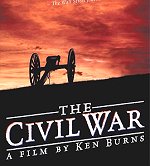 The Civil War - A Film by Ken Burns Here is the saga of celebrated generals and ordinary soldiers, a heroic and transcendent president and a country that had to divide itself in two in order to become one |
 Uncle Toms Cabin DVD also features a detailed and informative essay by historian David Pierce, an extensive collection of stills, promotional materials, and music cue sheets, and details of cuts made to the film, including two deleted scenes that are among the best moments the film has to offer |
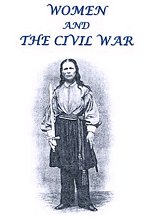 Women And The Civil War The many contributions of women in both the North and South are presented in this program describing their roles on and near the momentous battles of the American Civil War |
 Biography - Abraham Lincoln Preserving the Union Abe Lincoln's presidency in detail. The emotional tragedy and the humorus side of the man. His thoughts on the early commanders and dicussions with Historians. Pictures and details hard to find in other historical documentaries. |
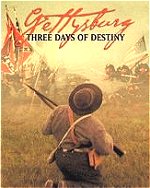 Gettysburg: Three Days of Destiny Presented by the Gettysburg Anniversary Committee and filmed at the massive 140th Gettysburg Battle Reenactment. The dramatic story unfolds through both Union and Confederate commanders dispatches, diaries and after-battle reports, with some of the biggest and most exciting Civil War battle sequences ever filmed |
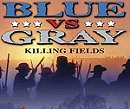 Blue Vs. Gray - Killing Fields Relive the most vicious fighting of the Civil War, in which General Ulysses S. Grant forcibly reversed the tide of the conflict by paying with the blood of thousands. It was a desperate time for the Union |
 Civil War Combat: America's Bloodiest Battles The violent mayhem of the hornet's nest at Shiloh, the valiant charge on the sunken road at Antietam, the carnage in the wheat field at Gettysburg, and the brutal fighting at Cold Harbor |
 Civil War Journal - The Conflict Begins These four programs from the History Channel series Civil War Journal cover critical aspects of the early days of the war. |
| Search AmericanCivilWar.com |
| Enter the keywords you are looking for and the site will be searched and all occurrences of your request will be displayed. You can also enter a date format, April 19,1862 or September 1864. |